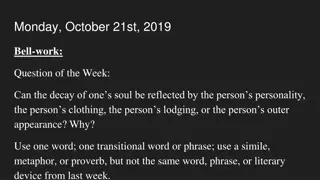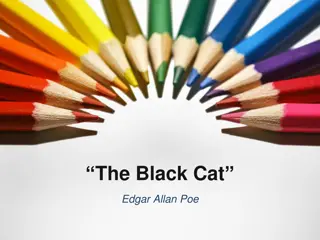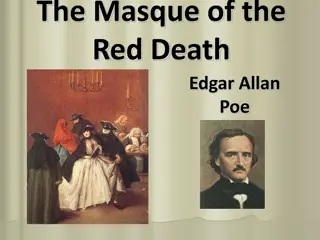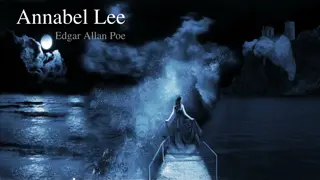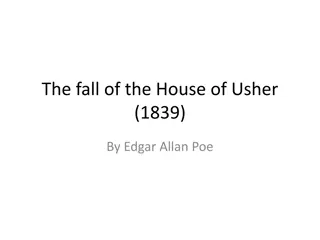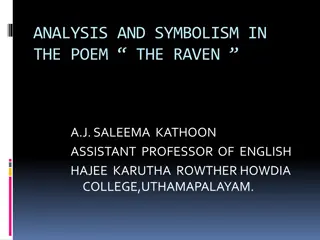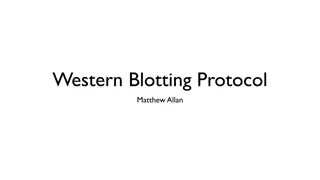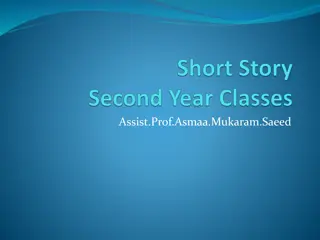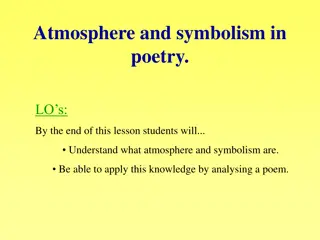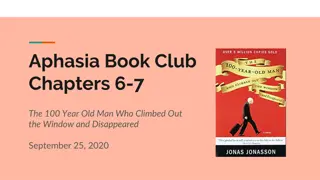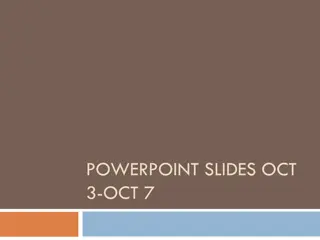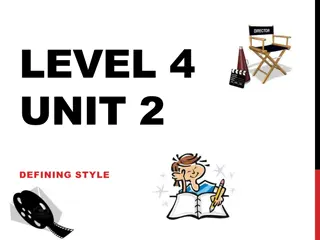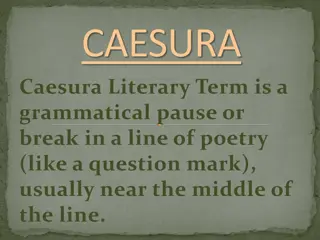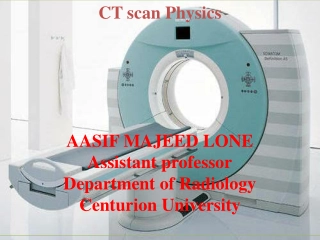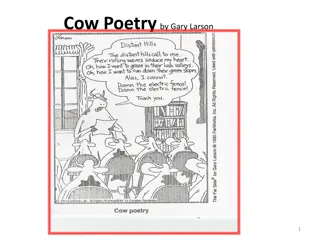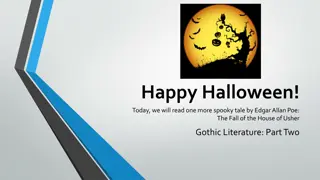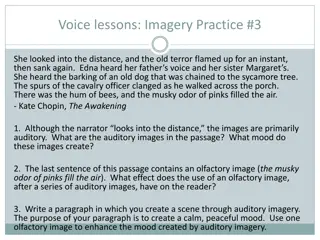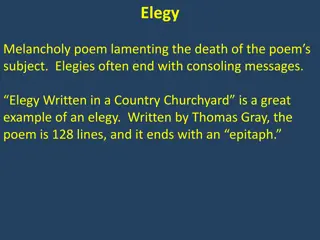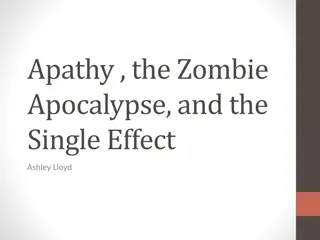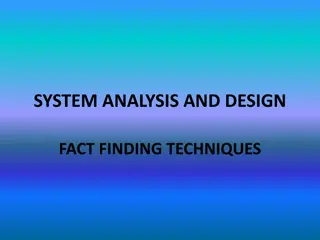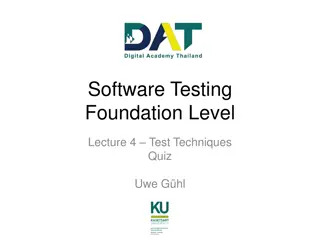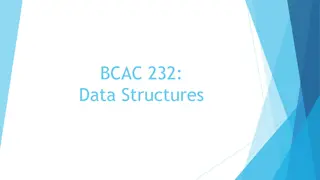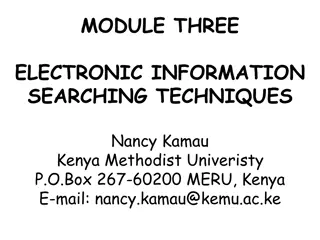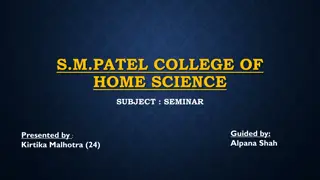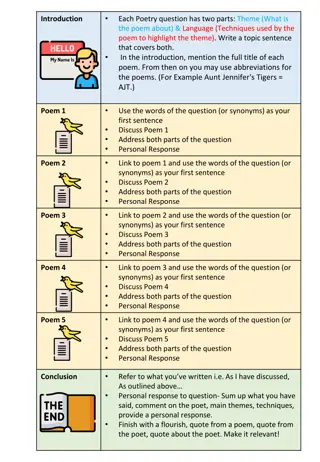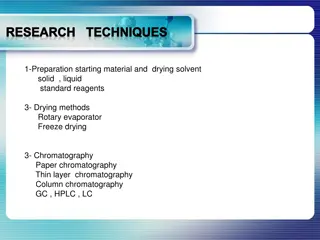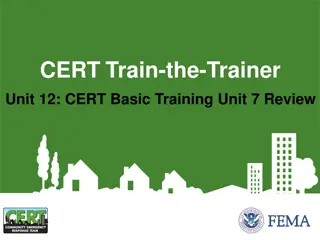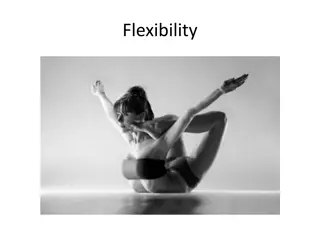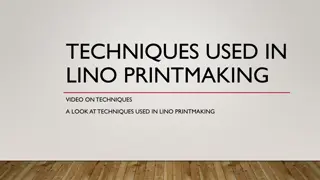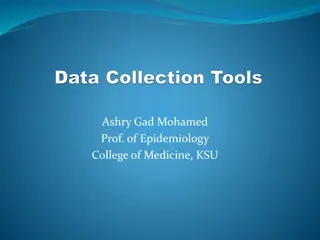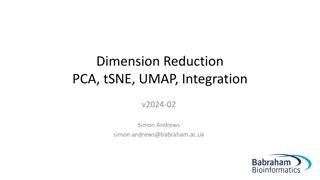Understanding ISTDP Techniques by Dr. Allan Abbass
Dr. Allan Abbass, a renowned professor at Dalhousie University, Canada, specializes in Intensive Short-Term Dynamic Psychotherapy (ISTDP). His work focuses on exploring transference, unconscious defense mechanisms, major resistance types, and complex transference feelings in therapy sessions. By delving into the spectrum of psychoneurotic disorders and tactical defenses, Dr. Abbass provides valuable insights into working through emotional challenges and fostering healthy relationships with parents and therapists.
Download Presentation

Please find below an Image/Link to download the presentation.
The content on the website is provided AS IS for your information and personal use only. It may not be sold, licensed, or shared on other websites without obtaining consent from the author. Download presentation by click this link. If you encounter any issues during the download, it is possible that the publisher has removed the file from their server.
E N D
Presentation Transcript
ISTDP Supervision Allan Abbass MD, FRCPC Professor & Director Centre for Emotions and Health, Dalhousie University, Canada. www.allanabbass.com Dr Allan Abbass
0061-0502-2507-4936_TN DeppressedChild BOND With Parents draft_lens2306692module12770636photo_1227683423small_out_of_control PAIN Rage, Guilt about the Rage Feelings Avoided Self-destruct Symptoms Dr Allan Abbass
Transference (Therapist) Current person Past person Dr Allan Abbass
Unconscious Defense Unconscious Anxiety Unconscious Impulses & Feelings Dr Allan Abbass
SPECTRUM OF PSYCHONEUROTIC DISORDERS SPECTRUM OF FRAGILE CHARACTER Spectrum of Patients with Fragile Character Structure STRUCTURE Severe/ Borderline Low Resistant Moderate Resistant Highly Resistant Resistant with Repression Mild Moderate Trauma age 2- 5, massive rage + guilt. Smooth Muscle, Conversion, and depression Trauma age 2- 5, massive rage + guilt. Muscle tension. Major detachment and character defenses Trauma age 5- 7, some rage + guilt. Muscle tension, detachment and defensive Grief about loss Muscle tension, detachment + Minor defenses Trauma age 0-2, massive rage + guilt and craving attachment. Anxiety interrupts cognitive- perceptual function, primitive defenses. Help block detachment and feel complex feelings Feel the Grief Build anxiety tolerance first, then feel complex feelings Handle defense, feel complex feelings
Tactical Defense Minor defenses Aim to divert the therapist Can be peripheral to major resistance or work on their own Are not tightly held Can usually either ignore them to block them easily Dr Allan Abbass
Major Resistance: 4 Types Isolation of affect: see with voluntary muscle anxiety Repression: see with smooth muscle anxiety and conversion Primitive Defense: See with cognitive- perceptual disruption Resistance of Guilt: Punitive Superego: need to defeat and sabotage Dr Allan Abbass
Complex Transference Feelings (CTF) Complex feelings mobilized in therapy linked to the past bond, trauma, pain, rage and guilt about rage. Includes appreciation and irritation toward the therapist (T) because of the challenge to resistance Dr Allan Abbass
Unconscious Therapeutic Alliance (UTA) This is the unconscious healing force in the patient UTA is mobilized in proportion to the degree of mobilization of the complex transference feelings Elevates mood over minutes Brings mental images and clear linkages to trauma Dr Allan Abbass
Initiating ISTDP: Steps 1. Handle barriers to engagement 2. Find the Front of the System 3. Psychodiagnosis 4. Monitor and work with 5 parameters These will determine next interventions, pace and expected processes Dr Allan Abbass
STEP 1: Barriers to engagement Barriers to collaborative engagement must be undone to see anxiety and defense manifestations Conscious resistances must be addressed by a conversation and conscious decision making by the patient Dr Allan Abbass
Examples of Barriers to engagement No internal problem Procrastination Defiance: Don t want to deal with it Suicidal Dr Allan Abbass
STEP 2: Find the Front of the System 1. Activated and avoided complex feelings: focus on the cognitive and somatic experiences of the underlying complex feelings. 2. Active defenses at the front: turn him against the defences in the room and focus on underlying feelings. Dr Allan Abbass
4 Fronts 3. Active Unconscious Anxiety: focus on the underlying feelings. If anxiety is too high, reduce it by recapping or reviewing bodily symptoms. 4. No activation: Take history. Explore problem areas searching for signs of anxiety and resistance. Dr Allan Abbass
2. Monitor Anxiety & Defense responses Unconscious Defense Unconscious Anxiety 1. Pressure on Feelings or Defenses Unconscious Impulses & Feelings Dr Allan Abbass
Striated Muscle Unconscious Anxiety Thumbs clench Hands Clench Arms Shoulders, Neck, Jaw Intercostal: Sighs Abdomen, back Legs and Feet Hyperventilation, Fibromyalgia, headache, chest pain, abdominal wall pain SEE WITH ISOLATION OF AFFECT Dr Allan Abbass
Smooth Muscle Anxiety Gastrointestinal Vascular, Coronary Arteries Bronchi Bladder hypertension, IBS, migraine, reactive airways, bladder spasm, abdominal pain SEE WITH REPRESSION OF AFFECT Dr Allan Abbass
Cognitive-perceptual Disruption Drifting, dissociation, losing track of thoughts, poor memory, fainting Visual blurring, tunnel vision, blindness Dysfunction/loss of other senses Hallucinations in all 5 senses Neurological complaints, dizziness, fainting, conversion SEE WITH REPRESSION AND PROJECTION/PRIMITIVE DEFENSES Dr Allan Abbass
Motor Conversion With a rise in feelings, instead of feeling emotions, the person becomes weak in the body in one or more areas. When conversion is active, there is no unconscious anxiety in the striated muscles When we treat this, the anxiety shifts to striated muscle SEE WITH REPRESSION Dr Allan Abbass
STEP 3: Psychodiagnosis: 6 responses Feel Feelings with inquiry: Low Resistant Feel feelings after pressure: Moderate R Defend: High Resistance Go Flat: Repression: High r with repression Go Flat: Projection or CPD: Fragile No Response: Search for the anxiety and resistance Dr Allan Abbass
Complete treatment in 1 or 2 sessions Breakthrough of grief about loss Low Inquiry Resistance Resistance Rises Striated muscle anxiety plus feel complex transference Feelings Moderate Resistance Pressure Repeated unlocking, working through, termination Resistance crystallizes in the transference Striated muscle anxiety plus feel complex transference feelings High Clarify, Challenge, Head on Collision Resistance Depression, smooth muscle anxiety or motor conversion High Resistance with Repression Capacity Building Formats GO FLAT: No striated muscle anxiety Cognitive-perceptual disruption or primitive defenses Fragile Character Structure Dr Allan Abbass
Search for Resistance If there are no signals of unconscious anxiety and defence, then we must search for the resistance and press in that direction to mobilize the unconscious Dr Allan Abbass
Why no signals? 1. Blockers of Primary Engagement in the Process 2. Anxiety goes other places 3. Hiding the anxiety 4. Character defenses 5. Organic factors 6. Psychotic/Projective processes 7. Repression 8. Suicidal or homicidal intention 9. Absence of unconscious Problem 10. Technical Problems Dr Allan Abbass
STEP 4: Monitor 5 Parameters 1. Active unconscious anxiety pathways: striated muscle, smooth muscle, cognitive- perceptual disruption. 2. Active major defense patterns: isolation of affect, repression, projection, and resistance of guilt (superego). 3. Degree to which resistances are syntonic versus dystonic: how much the patient identifies with his defenses. Dr Allan Abbass
5 Parameters 4. Degree of rise in the transference: low-, mid-, high-rise in CTF, or an already mobilized UTA. 5. Presence of thresholds and how high thresholds are: low moderate or high threshold to smooth muscle anxiety, CPD, repression or projection. Dr Allan Abbass
Spectrum of Mobilization Low Rise: Flat process: Little to no unc anxiety/defense present Mid rise: Resistance starts to crystallize between patient and therapist Breaking eye contact Slowing Ruminating Tense Muscles UTA: May see negation or Whisper from UTA Intervention: Clarify Defenses and Maintain Pressure Dr Allan Abbass
High Rise High Rise High degree of crystallization of defenses in the transference. Battle between Resistance and the Unconscious Therapeutic Alliance. Whispers and Negation. High tension in muscle Intervention: Challenge with the patient Maintain pressure Dr Allan Abbass
Low rise Therapist Patient Mid rise Patient Therapist High rise Therapist Patient = Defense Dr Allan Abbass
Low Rise Low activation of feelings, anxiety and defense Need Pressure applied to front of the system Dr Allan Abbass
UTA, CTF AND RESISTANCE RISE Resistance Unlocked Complex Transference feelings Unconscious therapeutic alliance Dr Allan Abbass
Pressure: Encourage good actions All efforts encouraging the patient to do something healthy Cementing the Bond Reaching to the person stuck under the resistances Several foci of pressure Identify Feelings Feel feelings Specifics Be present Be active Care for self Dr Allan Abbass
UTA, CTF AND RESISTANCE RISE Resistance Unlocked Mid rise: Resistance crystallizing in transference. Clarify and Challenge, Maintain pressure Complex Transference feelings Unconscious therapeutic alliance Dr Allan Abbass
Clarification: Question unhealthy behaviors Pointing out Do you notice you go detached now? Questioning Are you slowing down? Exploring impact of defense What will it do to our work if you go detached? Always keep up pressure - So let s see what you are going to do about it. Dr Allan Abbass
Challenge Interrupting and Blocking Defenses If you don t detach, if you dont shut down AGAIN you slow down and go passive AGAIN you go vague Pointing out non verbal resistance Do you see the way you hold your hands and now you now you smile Challenge is always done in concert with the patient and the growing UTA Challenge is always done while maintaining Pressure Dr Allan Abbass
Head on Collision Therapists most powerful intervention Confronts patient with reality Puts responsibility for change where it belongs with the patient Mobilizes patient to become involved in therapeutic task and increases CTF Addressed to UTA to go into battle against the R Inter-locking chain of Clarification and Challenge to major defense Followed by Pressure to do something about the Defense Dr Allan Abbass
Head on Collision II Head on Collide with the Resistance in the Transference Point out the destructiveness of the R Point out the benefits of giving up the R Verify the patient s will to overcome the R Underline the partnership Deactivate any defiance Get out of the shoes of parent : deactivate the transference Undo notion of therapist omnipotence Pressure: encourage them to give it their best effort Result: Complex feelings are experienced: the triggering mechanism for direct access to unconscious feelings Dr Allan Abbass
Head on Collision III Short Range HOC: for low to Mid Rise Interlocking Chain: For Syntonic High Resistant cases Comprehensive: For unlocking at High Rise Dr Allan Abbass
High rise: Resistance in transference. Challenge, Maintain pressure, Head on collide Resistance Unlocked Complex Transference feelings Unconscious therapeutic alliance Dr Allan Abbass
Striated Muscle Anxiety Goes Down Body Neurobiological Pathway of Rage: goes up same system displacing somatization Dr Allan Abbass AMA Atlas online
Breakthrough First breakthrough: some passage of grief with linkage to past or recent person Partial Unlocking: somatic pathway of love, rage, guilt and grief are experienced to small degree: vivid link to past person. Dr Allan Abbass
Dynamic Exploration UTA leads process to key areas Feelings are experienced Recapping in between Deepening insight and planning the work that needs to be done Case example Dr Allan Abbass
Unlocking First breakthrough: some passage of grief with linkage to past or recent person Partial Unlocking: somatic pathway of love, rage, guilt and grief are experienced to small degree: vivid link to past person. Dr Allan Abbass
RESISTANCE DROPS: UTA DOMINATES Partial Unlocking Resistance Partial passage of rage guilt and grief UTA: Links Unlocked Complex Transference feelings Unconscious therapeutic alliance Dr Allan Abbass
High rise: Resistance crystallized in transference. Head on collision Resistance Complex Transference feelings Mid rise: Resistance crystallizing in transference. Clarify and challenge First breakthrough Unconscious therapeutic alliance Low rise: inquiry and pressure
Locked Zone Violent rage Guilt Murderous Rage Grief
Partial Unlocking of the Unconscious CTF are mobilized and all aspects are partly experienced Rage and guilt partly experienced Anxiety and defences drop in proportion UTA give clear link or image of person from the past
Locked Zone Violent rage Guilt Murderous Rage Grief
Resistance High rise: Resistance crystallized in transference. Head on collision Complex Transference feelings Partial Unlocking Mid rise: Resistance crystallizing in transference. Clarify and challenge Unconscious therapeutic alliance Low rise: inquiry and pressure
Major Unlocking: Major Dominance of UTA over R Murderous rage passes in the transference Images transfers to past person Guilt passes for several minutes UTA is dominant Powerful effects: resistance is put down markedly



